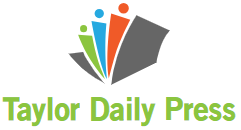A detector at the bottom of the Mediterranean Sea appears to have detected a high-energy neutrino, possibly created by an extreme event in the distant universe.
The KM3NeT neutrino detector is under construction at the bottom of the Mediterranean Sea. Although the measuring device is not yet complete, it can already detect neutrinos. Now it appears that the unfinished detector already has a record to its name. KM3NeT is likely to be the most energetic neutrino ever detected. And that’s what has physicists excited about. Joao Coelho From the French University of Paris City known during Neutrino 2024Conference in Milan.
cosmic neutrinos
Neutrinos are extremely light, uncharged particles that can be formed during nuclear reactions, for example in the Sun or in nuclear reactors on Earth. They also arise from violent events in the universe, such as when stars explode in supernovae, or from black holes.
Read also
Chance has played a major role in many amazing cosmic discoveries.
The universe is full of surprises. We have to embrace serendipitous discoveries in science, says astrophysicist Chris Lintott.
Only a handful of extremely high-energy neutrinos have been detected so far. The first was observed more than a decade ago. These energetic neutrinos come from the distant universe. But because there are so few of them, it’s hard to pinpoint exactly where these cosmic neutrinos come from. They’re likely created by unimaginably violent processes, such as when supermassive black holes swallow the matter around them. This happens with such force that a chunk of matter is thrown into space.
Astrophysicists are keen to detect the high-energy neutrinos produced by such events. The particles can tell us something about the cosmic processes through which they are created. That’s why researchers have built so-called neutrino telescopes, such as KM3NeT.
Incomplete detector
Neutrinos are hard to measure. They hurtle through everything at nearly the speed of light. Even Earth isn’t a problem for them. Only occasionally does one collide with an atom, causing a flash of light. KM3NeT measures the flash of light that occurs when a neutrino in Mediterranean water collides with an atom in a water molecule.
Ultra-high-energy neutrinos were observed by ARCA (Astroparticle research with cosmology in the abyss). This is the largest part of the KM3NeT detector, which searches for cosmic neutrinos coming to us from the distant universe. ARCA currently consists of 28 lines, each 800 meters long, each containing 18 transparent spheres containing light detectors. The lines are stuck 3.5 kilometers deep in the Mediterranean Sea, near the Italian coast. The goal is to expand this in the coming years. ARCA should be completed by 2028 and will consist of a “forest” of 230 spheres.
From where he came?
According to Coelho, the observed neutrino has an energy of tens of peta-electronvolts – making it the most energetic neutrino ever detected. He did not reveal exactly which part of the sky the neutrino came from during his presentation in Milan.
Coelho also did not provide further details, such as when the particles were discovered. This information is relevant to figuring out where the energy-rich particle came from. Was it a turbulent black hole? Or some other special cosmic explosion?
Anyone who wants to know more will have to be patient. After the summer, Coelho and his colleagues will reveal more information about the standard particle in a scientific publication.

“Total coffee specialist. Hardcore reader. Incurable music scholar. Web guru. Freelance troublemaker. Problem solver. Travel trailblazer.”








More Stories
GALA lacks a chapter on e-health
Weird beer can taste really good.
Planets contain much more water than previously thought